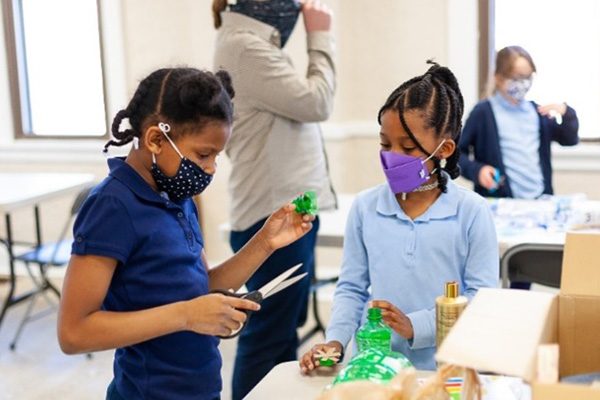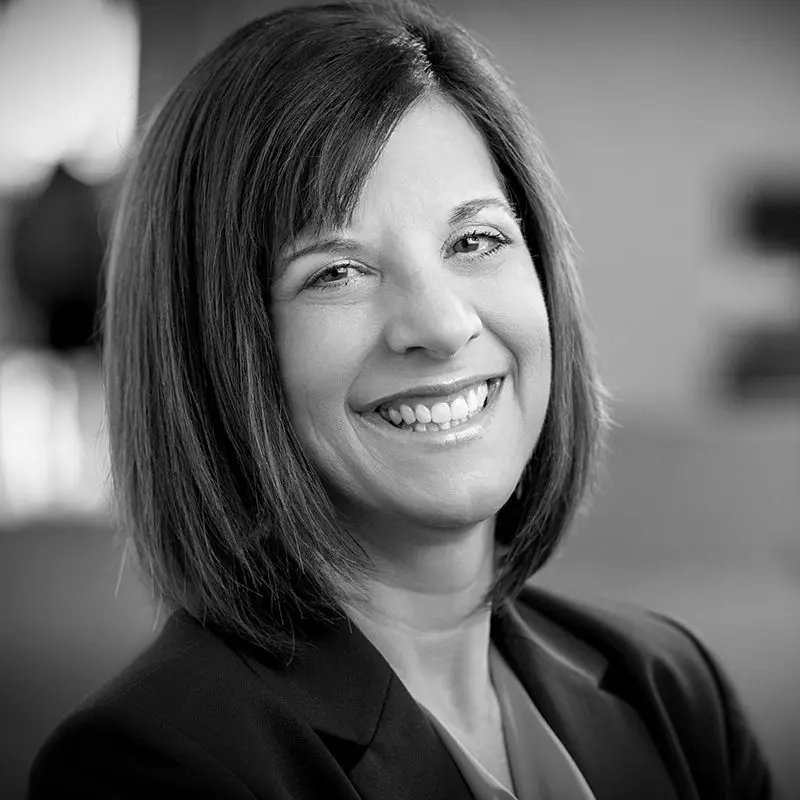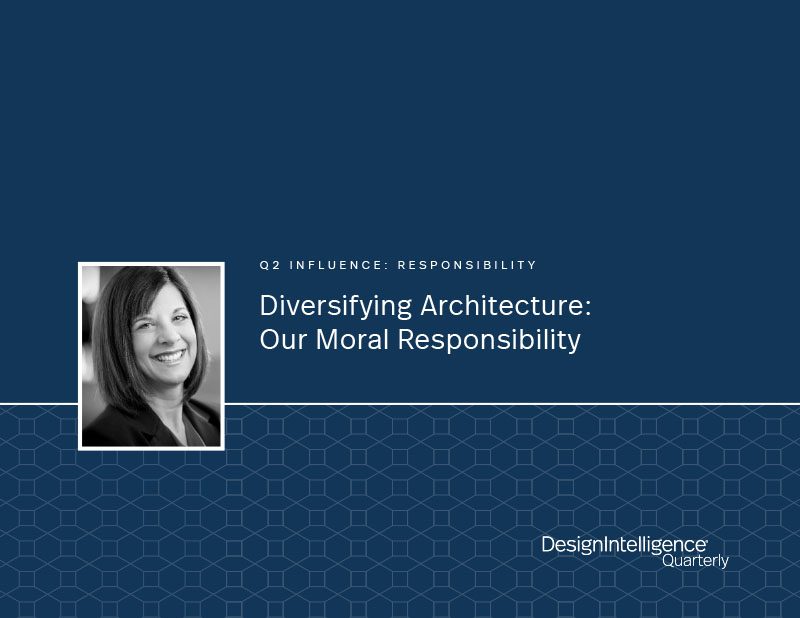Diversifying Architecture: Our Moral Responsibility
by Lauren Della Bella
President, SHP
June 1, 2022
SHP President Lauren Della Bella issues a challenge to the profession
Several years ago, I had a conversation with one of my employees about how difficult it was for him to decide to pursue a career in architecture. As the first person in his family to go to college, he felt tremendous pressure to choose the right profession. He didn’t have the luxury of figuring it out as he went along; the cost of college left him no room for indecision. He received minimal guidance from his family and his high school. Most daunting of all? This bright, thoughtful young man is Black, and when he looked for guidance and mentoring, he didn’t see people in our profession that look like him.
As a white woman, I couldn’t fully put myself in his shoes, but I could relate, in part because I can still recall what it was like, nearly 40 years ago, entering our male-dominated profession. To reinforce my connection to this issue, throughout my career, I have interviewed and hired countless people, and candidates of color have consistently been in short supply.
Architecture is a profession that eagerly — often doggedly — takes on clients’ complex and nuanced challenges. We are wired to attack problems and are addicted to the surge of pride and accomplishment that comes with solving them. Yet, mystifyingly, after decades, we have not solved the real and unmistakable issue of diversity, equity and inclusion (DEI) in our practices.
We have a moral responsibility to accomplish this now.
Attracting, retaining and rewarding diverse talent who reflect the human fabric of our communities and country should not be so difficult. Unfortunately, the political divide in the U.S. over race, immigration, women’s rights and other issues — plus the disturbing inequities around access to quality education — make it harder than it should be. But that’s no excuse for not doing the right thing.
In this spirit, the AIA has made diversity a priority while acknowledging the magnitude of the task. They’re right. Public entities have used set-asides to address inequities, and the results have been hit-or-miss because — and this is too often missed — achieving equity and diversity is not really about ownership or revenue, it’s about culture.
Creating firms with consistent cultures of acceptance, inclusivity, learning and support is essential to attracting and retaining a diverse staff. Such support means a willingness to meet people where they are, to listen and truly hear how their experiences influence their needs and their wants. For example, providing a Muslim designer a place to pray during the workday is just as important as providing a new mother a place to pump breast milk for her child. Encouraging participation in industry events, allocating time for consequential pro bono work, sponsoring H1B applications and advocating for the underserved are all opportunities to create and sustain more diverse and inclusive cultures.
Proper cultures can’t simply be manufactured; they must be lived. When a truly welcome and supportive culture for all is real, then opportunities for individual and collective growth naturally follow — and feel genuine. When companies only pay lip service to DEI, they not only shirk their responsibilities but thwart human flourishing.




Design Lab students, images courtesy SHP
Of course, before we can attract and retain more diverse talent, our industry must do a better job exposing underserved populations to the design professions. Career days at local schools are a good start but far from enough. It is our responsibility to meaningfully connect, mentor and guide students long before they’re completing their college applications. Most importantly, students must see and be able to connect with people that look like them.
If you’re not sure where to start to solve this problem, here’s some inspiration: the Architectural Foundation of Cincinnati’s Design Lab. It’s free, hands-on, K-8 education program is provided to local teachers, particularly those in low-income neighborhoods. The program, which reaches 2,000 students a year, is focused on building awareness, knowledge and community to broaden and deepen student appreciation for the natural and built environments.
Through the Design Lab program, local design and construction professionals team up with educators to guide students through real-world design problems. Along the way, the students hone a variety of skills, including critical thinking, creative expression and verbal and visual communication.

At the end of the four-month program, the students’ projects are displayed in the lobby of a downtown building, where they are judged in various categories. A diverse group from the local design, architecture and construction communities attends the award ceremony to cheer on and encourage the students — and ensure the students see people that look like them.
What our profession needs to do to create and sustain a more diverse workforce can be done. We all have a responsibility to support these efforts. With the abundance of creative talents and problem-solving skills in our industry, we should not only be able to solve diversity, equity and inclusion issues for ourselves, but leave a legacy for future generations and set an example for other professions to follow as well.
What are we waiting for?
Lauren Della Bella, LEED AP, is President of SHP. Her degree in Urban Planning steered her to work in impoverished Appalachian communities. She learned how important it was for people to have a place that was theirs no matter how meager or inadequate. Several years later, the opportunity to join SHP, a firm with a history of strengthening communities and resonated with her values and beliefs. In her thirty-four years with SHP since then, she has guided the firm’s strategic vision, championed the development of SHP’s community engagement process, developed Insite Magazine, and served as Chief Inspiration Officer of the 9 Billion Schools movement. Lauren feels strongly about helping women with leadership aspirations find the right path for advancement and success. She is a past president of the Architectural Foundation of Cincinnati, a Senior Fellow of the Design Futures Council, serves on the Cincinnati CEO Roundtable, is a member of the Women’s President’s Organization, and sits on the Advisory Boards for two colleges at the University of Cincinnati - Design, Art, Architecture and Planning, and Engineering and Applied Sciences.


